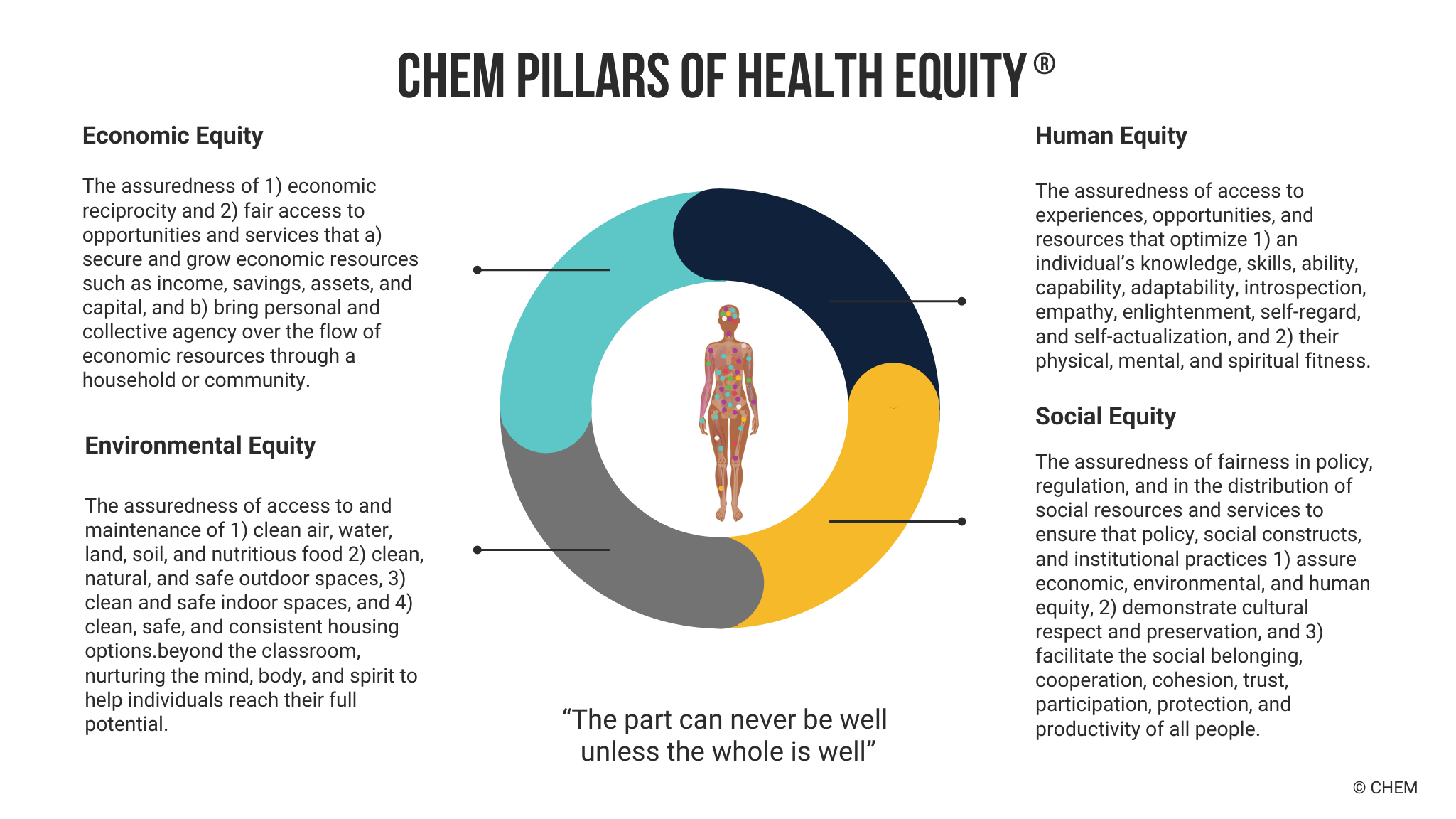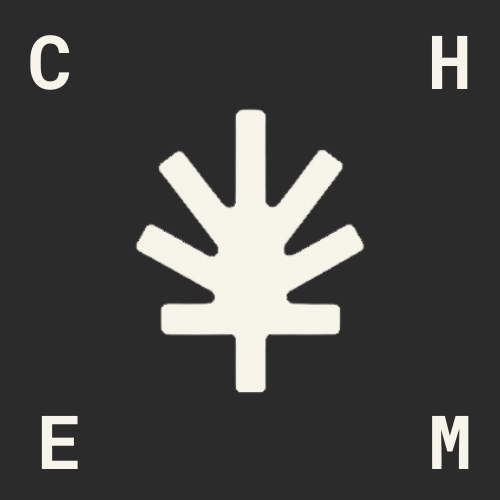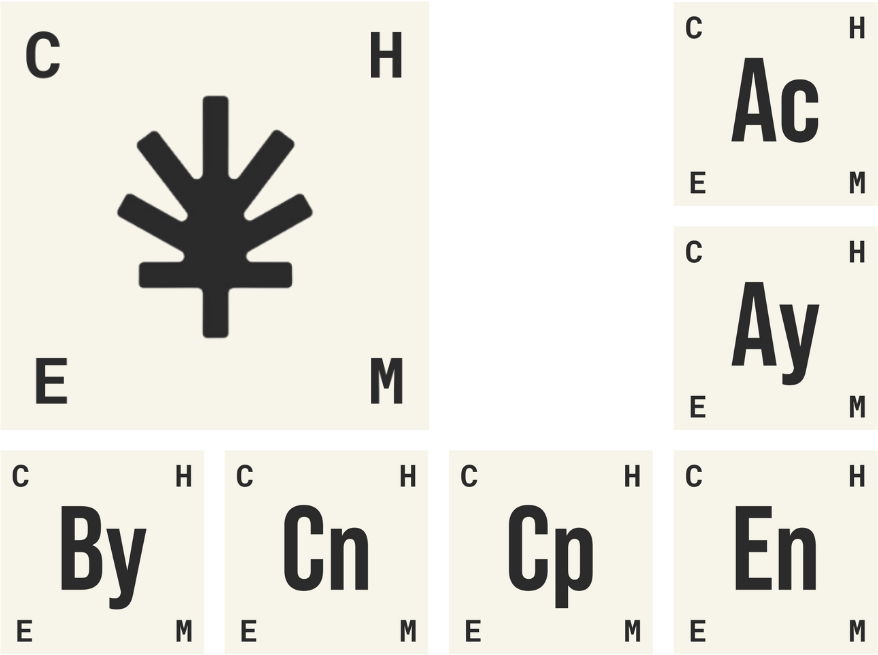Health Equity In Action
Assuring Comprehensive Wellbeing
Environmental Equity
The assuredness of access to and maintenance of 1) clean air, water, land, soil, and nutritious food 2) clean, natural, and safe outdoor spaces, 3) clean and safe indoor spaces, and 4) clean, safe, and consistent housing options.beyond the classroom, nurturing the mind, body, and spirit to help individuals reach their full potential.
Economic Equity
The assuredness of 1) economic reciprocity and 2) fair access to opportunities and services that a) secure and grow economic resources such as income, savings, assets, and capital, and b) bring personal and collective agency over the flow of economic resources through a household or community.
Human Equity
The assuredness of access to experiences, opportunities, and resources that optimize 1) an individual’s knowledge, skills, ability, capability, adaptability, introspection, empathy, enlightenment, self-regard, and self-actualization, and 2) their physical, mental, and spiritual fitness.
Social Equity
The assuredness of fairness in policy, regulation, and in the distribution of social resources and services to ensure that policy, social constructs, and institutional practices 1) assure economic, environmental, and human equity, 2) demonstrate cultural respect and preservation, and 3) facilitate the social belonging, cooperation, cohesion, trust, participation, protection, and productivity of all people.
CHEM’s Health Equity Framework
Applying the CHEM Pillars of Health Equity® to Drive Systemic Impact
CHEM believes that access to full health and wellbeing should be certain for all people despite differences resulting from designations of race, ethnicity, language, age, ability, gender, socioeconomic status, any other circumstance or identity, and the intersections among these.
Historically, systemic inequities and discriminatory policies have led to the divestment of marginalized communities, depriving them of agency and access to full health and wellbeing. As emerging industries and sectors experience rapid growth and generate substantial revenues, it is crucial to ensure that the benefits are equitably distributed and that pathways for restitution, reparation, and revitalization are created for the communities most harmed by past injustices.
As sociological and medical disparities continue to deepen across historically underserved and excluded communities, we must recognize the opportunities that emerging industries and innovations afford us in seeking solutions to create transformational healing within our most vulnerable populations. The resources generated by these industries extend far beyond financial gains – they offer uniquely sustainable solutions to addressing our most challenging health disparities.
Until now, there has been no comprehensive framework to evaluate policies, regulations, taxation, research, and innovations as mechanisms for achieving health equity. The CHEM Pillars of Health Equity® – a rubric developed to measure health equity – provides a groundbreaking solution that can be applied to any policy, industry, institution, or individual. By utilizing this framework, we can assess the extent to which our efforts are tracking towards health equity, ensuring that the growth and evolution of industries and policies lead to transformative healing for marginalized communities. This information is critical in holding ourselves accountable and driving systemic change that uplifts and empowers those who have been historically excluded.








